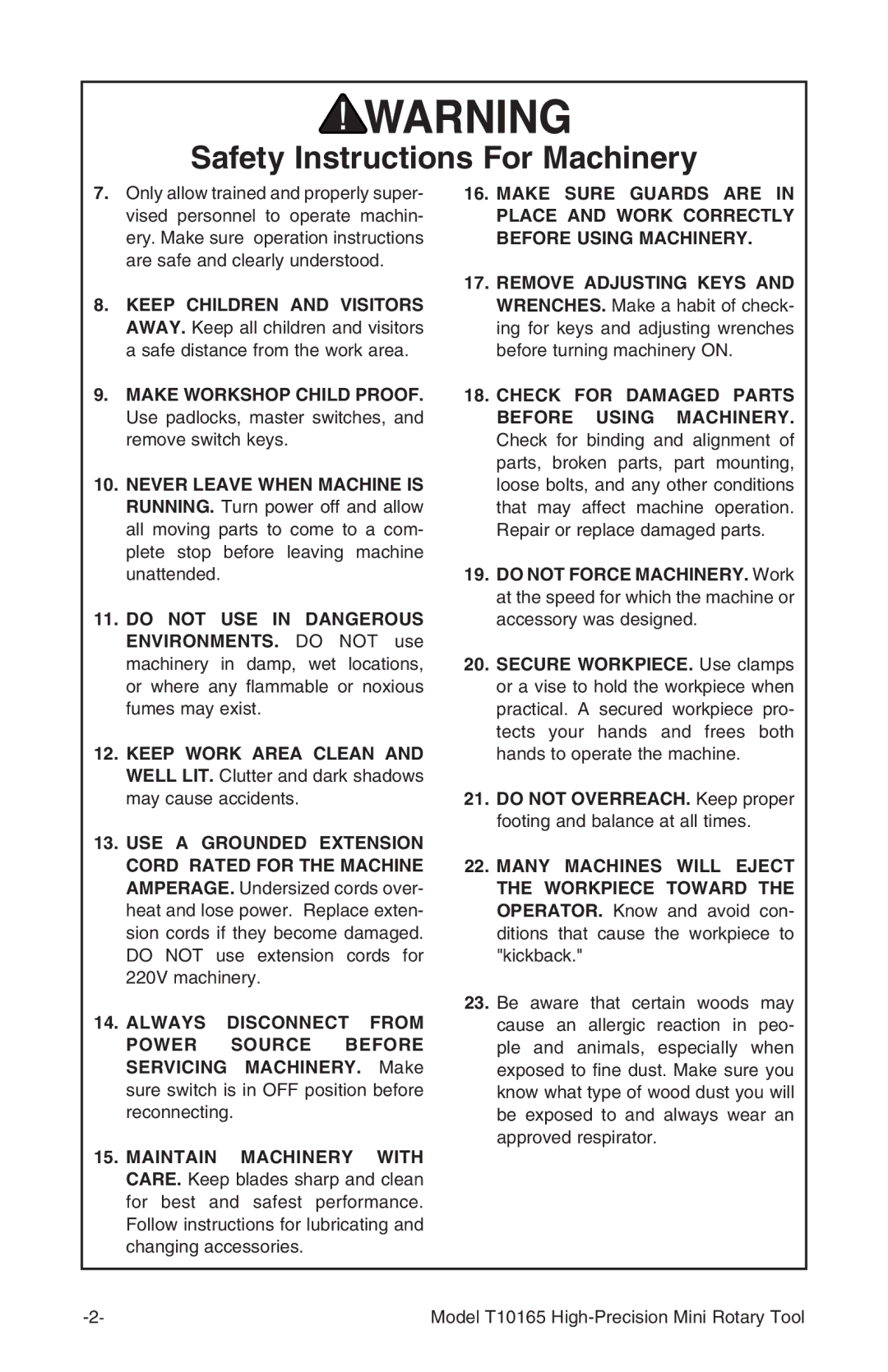
Safety Instructions For Machinery
7.Only allow trained and properly super- vised personnel to operate machin- ery. Make sure operation instructions are safe and clearly understood.
8.KEEP CHILDREN AND VISITORS AWAY. Keep all children and visitors a safe distance from the work area.
9.MAKE WORKSHOP CHILD PROOF.
Use padlocks, master switches, and remove switch keys.
10.NEVER LEAVE WHEN MACHINE IS RUNNING. Turn power off and allow all moving parts to come to a com- plete stop before leaving machine unattended.
11.DO NOT USE IN DANGEROUS ENVIRONMENTS. DO NOT use machinery in damp, wet locations, or where any flammable or noxious fumes may exist.
12.KEEP WORK AREA CLEAN AND WELL LIT. Clutter and dark shadows may cause accidents.
13.USE A GROUNDED EXTENSION CORD RATED FOR THE MACHINE AMPERAGE. Undersized cords over- heat and lose power. Replace exten- sion cords if they become damaged. DO NOT use extension cords for 220V machinery.
14.ALWAYS DISCONNECT FROM POWER SOURCE BEFORE SERVICING MACHINERY. Make sure switch is in OFF position before reconnecting.
15.MAINTAIN MACHINERY WITH CARE. Keep blades sharp and clean for best and safest performance. Follow instructions for lubricating and changing accessories.
16.MAKE SURE GUARDS ARE IN PLACE AND WORK CORRECTLY BEFORE USING MACHINERY.
17.REMOVE ADJUSTING KEYS AND WRENCHES. Make a habit of check- ing for keys and adjusting wrenches before turning machinery ON.
18.CHECK FOR DAMAGED PARTS BEFORE USING MACHINERY.
Check for binding and alignment of parts, broken parts, part mounting, loose bolts, and any other conditions that may affect machine operation. Repair or replace damaged parts.
19.DO NOT FORCE MACHINERY. Work at the speed for which the machine or accessory was designed.
20.SECURE WORKPIECE. Use clamps or a vise to hold the workpiece when practical. A secured workpiece pro- tects your hands and frees both hands to operate the machine.
21.DO NOT OVERREACH. Keep proper footing and balance at all times.
22.MANY MACHINES WILL EJECT THE WORKPIECE TOWARD THE OPERATOR. Know and avoid con- ditions that cause the workpiece to "kickback."
23.Be aware that certain woods may cause an allergic reaction in peo- ple and animals, especially when exposed to fine dust. Make sure you know what type of wood dust you will be exposed to and always wear an approved respirator.
Model T10165 |
